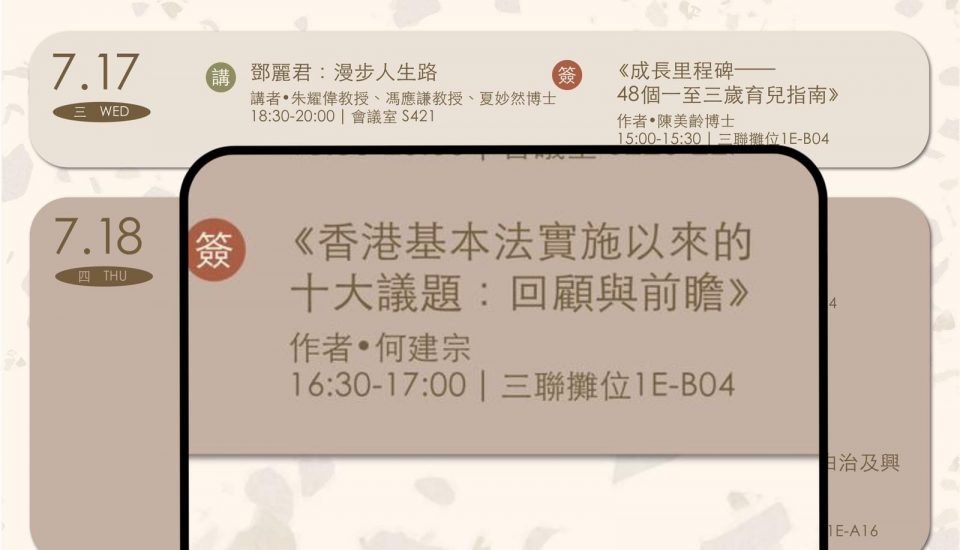Henry Ho: Resumption of quarantine-free travel boosts HK’s integration into nation

Henry Ho: EDB’s guidelines on teachers’ conduct are timely, necessary

Henry Ho: Zheng’s appointment turns a new page for Hong Kong

As Lunar New Year approaches, the long-awaited resumption of quarantine-free travel between the Chinese mainland and Hong Kong on Jan 8 has fueled the excitement of many people after a three-year hiatus.
While the public focus is mostly on family reunions and economy recovery, it is undeniable that the resumption of quarantine-free travel will also inject great impetus into the development of the Guangdong-Hong Kong-Macao Greater Bay Area (GBA), especially Hong Kong youths’ integration into the nation.
In 2017, the Framework Agreement on Deepening Guangdong-Hong Kong-Macao Cooperation in the Development of the Greater Bay Area was signed in a bid to deepen cooperation among Guangdong, Hong Kong and Macao, take forward the development of the GBA, and maintain the long-term prosperity and stability of the two special administrative regions. The agreement aims at developing the GBA into a dynamic economic region ideal for living, working and traveling and a showcase for in-depth cooperation between the Chinese mainland and the Hong Kong and Macao special administrative regions.
There is no doubt that the promulgation of the arrangement has accelerated Hong Kong’s integration into the nation. According to official data, from 2012 to 2022, mainland higher education institutions had enrolled a total of 79,000 students from Hong Kong, Macao and Taiwan. As of January 2022, the number of Hong Kong students studying in mainland universities had reached 18,430, around the same as the number of those studying in the United Kingdom. In response to the increasing demand, my organization established the Support and Development Centre for Hong Kong and Macao Youths studying in the Chinese mainland (www.hkyouthhome.com) in 2019 to encourage Hong Kong students to study and pursue career development in the mainland cities of the GBA.
However, social cleavages caused by the monthslong social unrest in Hong Kong in 2019 impeded the integration process. The COVID-19 pandemic, which engendered strict quarantine requirements for cross-border travelers, caused further hinderance. The most obvious change in cross-border interaction was the shrinking number of cross-border students (kindergarten, primary and secondary) in Hong Kong, which decreased from 27,909 in 2018 to 18,260 last year.
The pandemic also affected implementation of the Greater Bay Area Youth Employment Scheme unveiled in the chief executive’s 2020 Policy Address, which aimed to encourage and support Hong Kong’s young people to pursue their careers in the mainland cities of the GBA. According to a Legislative Council report, as of mid-January last year, only 1,090 graduates had been successfully recruited under this program, with about 2,000 job vacancies failing to find a match from nearly 19,000 job applications. Replying to a lawmaker’s inquiry in February 2022, then-secretary for labour and welfare Law Chi-kwong listed various factors that affected the program’s outcomes, among which were the quarantine requirements for cross-border travel.
We were pleased to see that Chief Executive John Lee Ka-chiu announced in his maiden Policy Address last year his administration’s plans to enhance and regularize the Greater Bay Area Youth Employment Scheme. The move was confirmed in the Youth Development Blueprint released in December, which outlines the overall vision and guiding principles for the HKSAR government’s long-term youth development work with more than 160 actions and supporting measures. With the resumption of quarantine-free cross-border travel, the program will not only facilitate Hong Kong youths to better leverage opportunities for career advancement on the mainland side of the GBA, but also serve as an effective way to help them understand the latest developments on the mainland, and thus help accelerate the city’s integration into the overall national development.
In addition, over the years, the cross-border infrastructure between Shenzhen and Hong Kong has undergone remarkable advancements, with the number of land checkpoints reaching seven and the high-speed railway being put into service. Now that quarantine-free cross-border travel has resumed, the “one-hour living circle” vision for the GBA is likely to be realized soon. How can more Hong Kong people, especially the youth, be encouraged to work and live in the mainland cities of the GBA? The idea of the “commuting mode of integration” is worth considering.
The commuting mode of integration refers to the lifestyle of “living in Shenzhen and working in Hong Kong”, or vice versa. For the former, the advantages are well-known — Hong Kong residents can enjoy low living costs in the mainland, while benefiting from a higher income and lower tax rates in Hong Kong. In fact, such cross-border passenger traffic was on the rise before the pandemic. The option is mostly favored by freelancers or those who live and work near railway stations in Hong Kong.
The latter option, “living in Hong Kong and working in Shenzhen”, is rarely mentioned by the media and the public, but it is worth advocating equally. According to our previous surveys, many young Hong Kong people are worried about not being able to adapt to the living environment in the mainland, and not being able to establish a social circle there immediately. If they choose to live in Hong Kong and work in Shenzhen, they can save on living costs in Shenzhen, while maintaining their connections in Hong Kong. In this way, they may be more willing to step out of their comfort zone and seek further development in the GBA. For “Hong Kong drifters”, or those who left the mainland and moved to Hong Kong, many of them prefer the lifestyle in Hong Kong but wish to seize the development opportunities in the mainland. Such a way of commuting is also attractive to them.
To encourage the commuting mode of integration, it is necessary to streamline the procedures for border-crossing. We suggest the HKSAR government consider adopting a joint customs clearance arrangement similar to the one implemented in the Macao SAR which allows residents to use only their mainland entry permits to complete the whole customs clearance procedure when entering the mainland, greatly reducing the time for clearance.
It’s also feasible for the HKSAR government to provide allowance and transport subsidies to Hong Kong commuters. High transportation costs have long been a major problem for cross-border commuters. It would boost Hong Kong residents’ willingness to work on the mainland side of the GBA if the HKSAR government were to subsidize their transportation via high-speed railway and cross-border buses, or extend the current Public Transport Fare Subsidy Scheme to the through-train services between the two sides.
In conclusion, the resumption of quarantine-free travel between Hong Kong and the mainland is undoubtedly the first good news in 2023. As cross-border travel returns to normal, the integration of Hong Kong into the GBA is sure to usher in a new stage with more possibilities awaiting Hong Kong youths.
The author is founder and chairman of One Country Two Systems Youth Forum.




